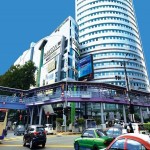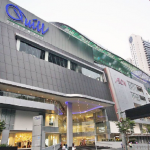Eleven shopping malls are projected to be completed in Klang Valley by the second half of the year, releasing about 6.58 million sq ft of net leasable retail space into the market, reported The Star.
According to Knight Frank’s Real Estate Highlights report, the largest retail space entering the market by 2H 2018 is the Empire City Damansara Mall, which will inject approximately 2.3 million sq ft of retail premises. This is followed by Tropicana Gardens (1 million sq ft) and Central i-City Shopping Centre (940,000 sq ft).
The substantial amount of incoming supply is expected to push down occupancy levels, after total retail stock in Klang Valley already reached 57.5 million sq ft in 1H 2018.
“Retail space per capita, analysed at around 7.0 sq ft per person, is one of the highest in Malaysia. The current concern weighs more on the completed retail stock that have yet to be filled and this puts further pressure on occupancy levels going forward,” said Knight Frank.
“The Klang Valley retail landscape continues to face strong headwinds and the recent completion of some 450,000 sq ft of space further heightens competition in an already crowded market.”
Nevertheless, Kuala Lumpur City Hall’s (DBKL) move to freeze development approvals to tackle the growing supply/demand imbalance for certain property types is expected to the help the retail market.
“This measure is expected to provide a breather to the oversupplied retail market as it seeks to find its equilibrium,” noted the property consultancy.
Moreover, the retail property sector is forecasted to benefit from Putrajaya’s decision to zero rate the Goods and Services Tax (GST) as well as set a minimum wage of RM1,500 per month.
Knight Frank also highlighted that some prime shopping malls in the capital and Klang Valley performed well during 1H 2018.
“In Kuala Lumpur city, Suria KLCC and Pavilion Kuala Lumpur continued to command higher average monthly rentals of RM24 psf to RM26 psf. These popular malls registered near full occupancy of 97 percent and 99 percent respectively.”
“In the city fringe, Mid Valley Megamall and The Gardens Mall command average monthly rentals of RM17 psf and RM16 psf respectively. These malls registered 100 percent and 98 percent occupancies, with back-to-back tenant movements and renewals.”
Similarly, The Mines in Selangor and Sunway Pyramid Shopping Centre recorded high occupancy levels of 94 percent and 99 percent, but their rents are lower at RM9 psf and RM14 psf respectively, added Knight Frank.
Meanwhile, the Borneo Post reported that Malaysia’s retail space market is being negatively impacted by the growing popularity of online commerce.
According to Kenanga Investment Bank’s research division, future rental escalations of shopping malls are expected to be limited by the growing supply of such properties and the stiffer competition with e-commerce.
“In order to stay relevant, mall managers would need to adapt to the rapid changes in the retail environment to integrate and animate shoppers’ experience with the need for brick and mortar,” noted Kenanga Research.
It also noticed a trend wherein REIT with retail assets are changing their set-up of housing big anchor tenants in favour of more diverse niche occupants to create themed concepts in a bid to attract more customers.
“This helps to address the issue of ‘all malls being the same’ syndrome,” it noted.
For instance, CapitaLand Malaysia Mall Trust renovated Sungei Wang Plaza to enhance its retail and eatery mix as well as incorporate family entertainment and athleisure venues. It also repositioned 3 Damansara, formerly known as Tropicana City Mall, into a shopping centre that offers more gourmet dishes and delicacies.
On a brighter note, Kenanga Research said a recent study shows that brick-and-mortar stores are still needed as such properties not only boost in-store transactions but purchases on the internet as well.
“Reason being is that customers prefer to physically evaluate-in-store items prior to purchasing them, provided that convenient physical retail store locations are available, based on research by Dr. Anuj Kumar of the Department of Information Systems and Operations Management at the University of Florida Warrington College of Business.”
“All things considered, we believe that in the longer run there would be a lesser need for physical retail spaces, but this research alleviates the daunting doomsday outlook for brick-and-mortar retail,” it added.
This article was edited by the editorial team of PropertyGuru. To contact them about this or other stories email editorialteam@propertyguru.com.my
Those who want to understand more about the property market, read the latest Property Market Insights.




